Quick CLIP STUDIO PAINT Trick
Quick CLIP STUDIO PAINT trick
If you’re like me, then you guys love shading your sketches or lineart. Like this:

But if you erase a bit and shade more with black on low opacity it’ll look all wonky so you use the color picker. Or hell you scan or take a photo of a drawing you made on paper. But then this happens if you wanna put color under it!

Oh no! Now I have to set it to multiply to color it in! And then I can’t color in the lineart! :(
Fret not, my dear friends! I found the solution! Go to [Edit] > [Convert brightness to opacity]

And suddenly you have this:

This way you don’t need to set the lineart to multiply and can color it in! It also works perfectly, if you use this nifty little trick on traditional drawings that you scanned.
I hope this helped you guys, because I sure as hell didn’t know about this until yesterday! ♥
More Posts from Artrefforsteph and Others
HIIRAREFS: Basic and Intermidiate guide to colouring in
What better day to end the year then with a basic guide to colouring- This is for beginners or intermediate artists. Colouring is a big part to an art piece, whether you decide to use colours or not, that’s up to you, but for the most part, having some knowledge on appliance of colour will really help you out!
____________________________________________
ARTISTS WITH AN INSPIRING KNOWLEDGE OF COLOUR APPLICATION! Please take the time to have a look at other artists work so that you ca research and get inspired!
Gullacass: Uses brights, dulls and pastels to create brilliant guro, pop and macabre pieces| DA + TUMBLR
TinyCalcium: Old friend of mine who explores brights and mustard colours and places them as a foundation for their work | TUMBLR
BeastPop: Talented with opposing and Triwheel colours. Outstanding cell-shading, and knows how to flexibly bend colour form to their will in popart. | DA
H0stel: Fantastic composition of light direction and applies colour to bodies based on ambient occlusion. | TUMBLR
_____________________________________________
COLOUR SLANG: I use some strange slang to express colour types and shades as well as groups. Although they may not be canonically correct, I will use these terms to describe colour palates to the best of my ability! Analogous: Colours that are near or adjacent to each other on the colour wheel, EG: Red and Orange
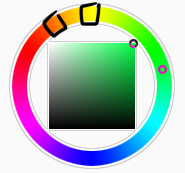
Oppositional/complimentary: Colours that are opposed or opposite from each other on the colour wheel, EG: Cherry and Green
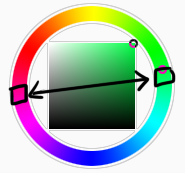
Triadic: Colours that form a triangle on the Colour wheel, EG: Cyan, Magenta and Yellow. These three colours when mixed together will make black.
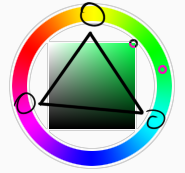
Arrowtype/Quadcolour: Four colours, that generally form an arrow shape on the colour wheel.
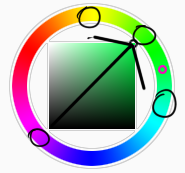
Tetradic: Colours that form a rectangle or square in the colour wheel
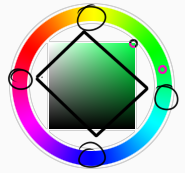
Neons: The very brightest you can get a colour, be careful where you use them as they can look ugly together at the most. Try to use neons when you are adding bright glowing objects to your piece. Neons are great for highlights.

Brights: Slightly washed Neons. Appropriate if you have characters that are colourful.

Washed: Very washed brights with a hint of grey. These are also useful for colourful characters.

Pastels: Colour with white in them to make them seem light.

Baby Pastel: Pastel with even more white in them, good for subtle highlights.

Darks: Colour with black added to them. Used mostly for lineart.

Mustards: Colours with dark grey added to them

Earthen: Colours with brown added to them

Warm and Cool colours: Warm colours are colours that range fromMagenta to Yellow. Cool ones range from Lime to Fuchsia.

Straight tones: A greyscale palate. or a straight scale of one colour from black to it’s neon form.

Warm and cool tones: Warm tones are a greyscale mixed with warm colours and cool tones are greyscale mixed with cool colours.

Skintones: Warm washed or pastel colours generally used to colour in skin, but they don’t have to be warm at all! ( I will not show you a palate for this however)
______________________________________________
WHAT TO AVOID WHEN COLOURING: beginner artists, tend to go ahead and start by colouring their line art with neon and mustard colours. Neons are not necessarily good for base colours unless the character has a glow.
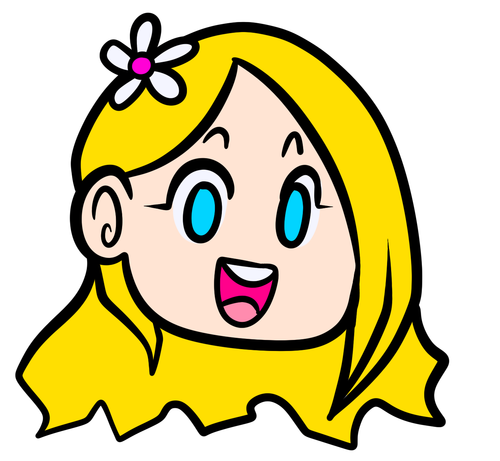
I often see lazy attempts to shade, often a beginner artist with use an airbrush and use black and white to shade and highlight their piece. This is not very effective, and I’m sorry to say… It’s kind of gross as well. Try to avoid being lazy. If you have a piece that has bold black lines, avoid using soft shading and airbrushing at this point of time.
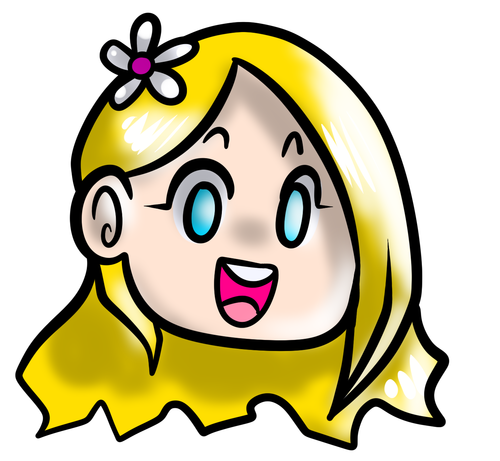
Black and white isn’t always the best option when colouring in your piece, but it also depends on the style you are trying to convey. If you plan on only using straight tones to colour in a piece, black and white is good.
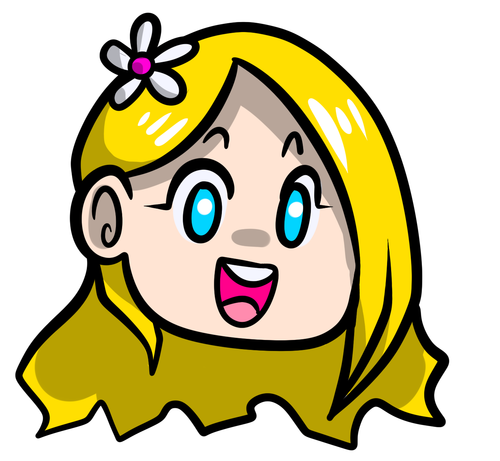
A GOOD BASIC WAY TO COLOUR For this basic tutorial I will show you a nice way to colour in a piece with bold lines. I will be using Minty’s Classic character as an example.
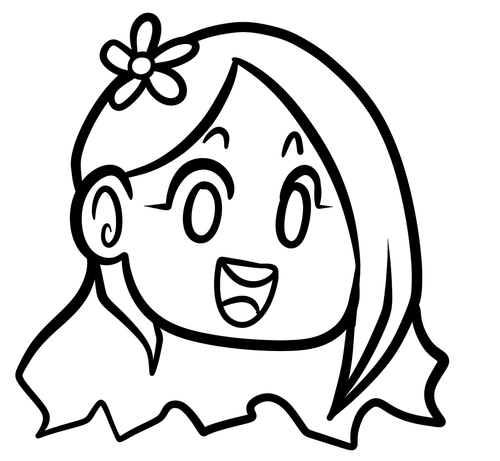
Begin with using brights that have been washed down a little and washed skin tones if your character is human based. Avoid using neons or mustards if you are able. If there is white on the character, such as the white on an eyeball or the teeth, consider using baby pastels. For Minty’s eyeballs I have used a baby pastel blue. I have chosen to use a darker and more washed version for her Irises.
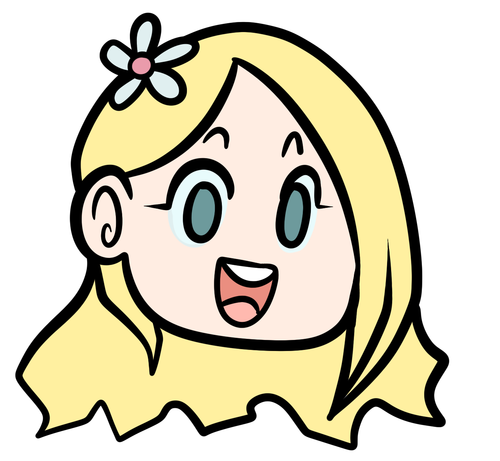
With you foundation colours placed down, use a washed warm colour for the skin tone, such as a salmon. If the character’s hair or fur is warm coloured, use a pink or red orange to shade that as well. Use the cell shading technique. This may mean you will have to erase some of your shading so be sure to do this on another layer. For your baby pastels, you can use a regular pastel to shade it. For Minty’s eyes I have used pastel blue and lowered the opacity by a little.
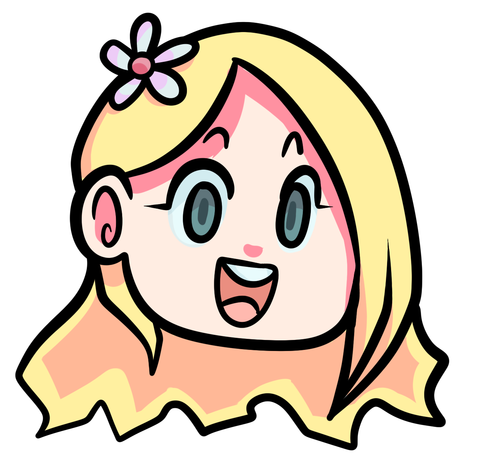
For Highlights, I have chosen to use baby pastel yellow. I wanted the piece to be warm.
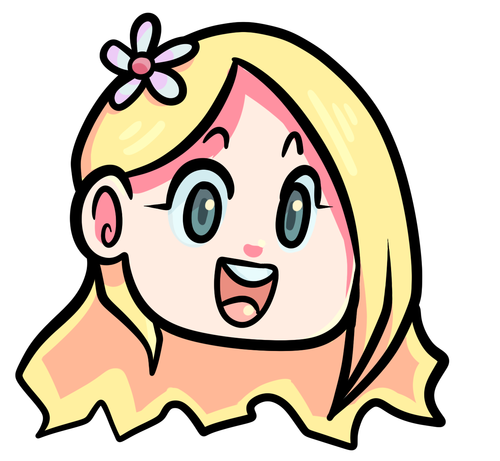
Applying a light airbrush over the top of the piece makes it feel a little softer. I have also applied the airbrush over the initial borders to create colour bleed, giving a very subtle reflective approach.
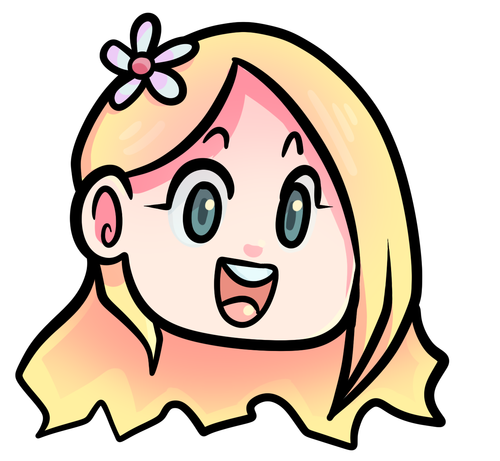
Colouring your line art layer, particularly if you have bold lines, can really make a piece look more interesting! I like to leave the overall outline black. You can gradient and bleed colour in your line art as well
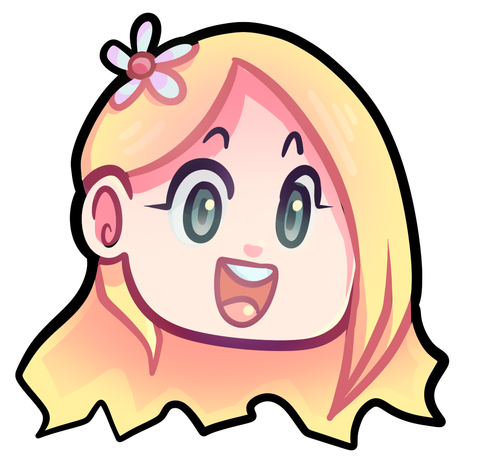
Light tracing is a technique lots of artist’s use, where they run a sharp line of highlight next to line art to divide borders.
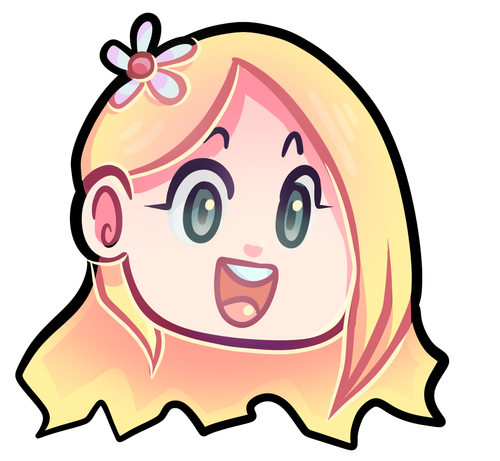
This looks a lot nicer than the black and white shading, doesn’t it!? __________________________________________
This is a very very simple guide to applying colour to your piece! If This helped, please reblog and share this guide around!
If you have any questions or feedback, don’t be afraid to send me a message!
i just found this website that can randomly generate a continent for you!! this is great for fantasy writers

plus, you can look at it in 3d!

theres a lot of viewing options and other things! theres an option on-site to take a screenshot, so you don’t have to have a program for that!
you can view it here!
how do i learn how to storyboard comics
1. set the panels

the first version is the easier but also boring for the eye, the sequence rectangular-square-square and repetitive, try to use diagonal cut, open space and vertical cut to help the movement of the story and action.2. use movement to tell the story

3. Pose, Perspective and Line density
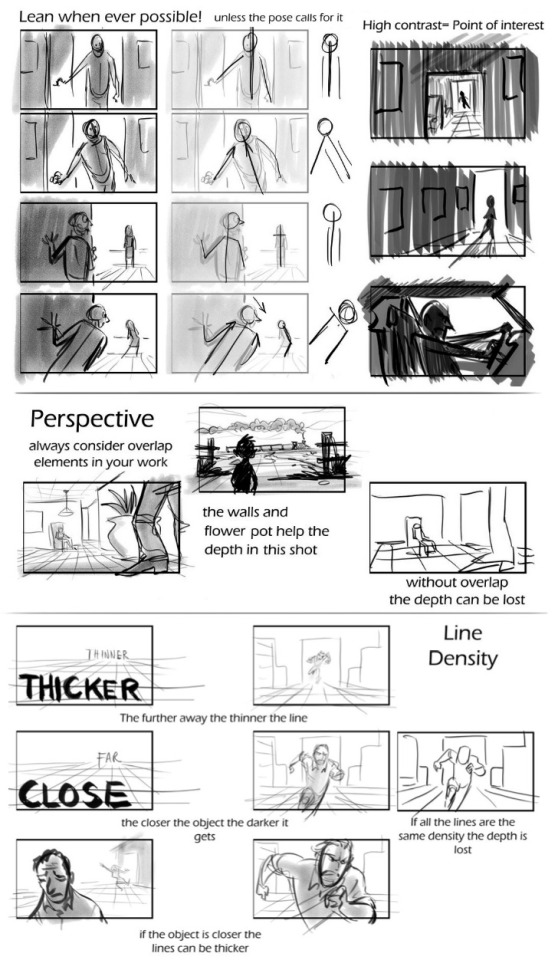
4. Framing and Silhouettebeing the file too big it’s a link format
In my opinion, those are the main rules to make a good storyboard. If you need more help ask awayMOD.gif

:) hope you like it!
my current brushes i used a lot here: painting brush(speckles), the ones i called sim
https://dl.dropboxusercontent.com/u/12795238/sim2014_23_08.abr
enlarged tutorial images:
https://dl.dropboxusercontent.com/u/12795238/wald%20tut%20large%20images.jpg
Text tricks.
<sup> makes words go like thiiiiis.
<sub> makes them do thiiiiis.
<small> makes words go little. The more <small> you have the smaller the word.
Same thing applies with <big>.
<u> makes underlines.
Go here for Full Width.
̛̰̖̲̰͑ͨ͒̌͑̍̿̈͘Z̨̜̲̥̯̮̭͍̳ͧͣ͋̊̋͗Ȁ̪̼̠͎͒ͨ́̚͘͢͞L̸͉̬̻͌̒͑̊̽͡Ğ̝̮̝̗̲ͧ͝Ȍ͍̪̪̖͕̟͈̝̰̆͋̾̀ is found here.
Go here if you want some uʍop əpısdn.
_______
Of course these are just basic things. You can also look at the HTML button for the codes if youre not up for searching through Google for them.
The button is here:

If you have no idea what to draw...

its like having all the money you wanted ,but you dont know what to buy. Making this to look at when I get stuck with lame ideas. These are all suggestions from my followers:
Taking a break: No option for me but it surely can be good for other overworked peeps
Exploring new art forms: depending on your art style, surrealism would be something I’ve never tried before.
Shape game: Either sketching blindly and connecting the dots or sketching random shapes and fill them with faces or whatever comes to your mind.
Draw something you never drew before: …a good picture…
Draw a shark: How to draw a shark by Will Terrell
Read books: Let your mind to the picture first and then your hand.
Poses: Action poses - freestyle dancing - fight styles - (dancing people in general)- life drawing - online 3D model
Redoing Artwork: Either your old stuff or from your favorite artists, your way.
Reverse storyboarding: take your fav movie and sketch the the shots after every camera change.
Screencaps: study them, draw them, look at composition
Characters: Let your OC’s do extreme expressions, let them do things (driving,cleaning,running,etc)
Concepts: How people could look like on other planets. Look at Character Design
Planing an art project: A comic in my case, thinking about environments and characters etc.
Drawing upside down: ¿¿¿¿¿¿¿¿¿¿¿¿¿¿¿¿¿¿¿¿¿¿¿¿¿¿
Fanart: Illustrate your favorite book, series,Manga ,etc
Sideblog: Gathering all the references for all your needs
-
 anarchyspider liked this · 1 month ago
anarchyspider liked this · 1 month ago -
 laughysaffy-skies reblogged this · 1 month ago
laughysaffy-skies reblogged this · 1 month ago -
 laughysaffy-skies liked this · 1 month ago
laughysaffy-skies liked this · 1 month ago -
 cjattmblr liked this · 5 months ago
cjattmblr liked this · 5 months ago -
 ghoul--chan liked this · 5 months ago
ghoul--chan liked this · 5 months ago -
 nerdy-chocomallow liked this · 5 months ago
nerdy-chocomallow liked this · 5 months ago -
 kittydoremi reblogged this · 5 months ago
kittydoremi reblogged this · 5 months ago -
 multidimensionalfang1rl liked this · 9 months ago
multidimensionalfang1rl liked this · 9 months ago -
 ordinaryvxnity liked this · 9 months ago
ordinaryvxnity liked this · 9 months ago -
 anon-by-design liked this · 9 months ago
anon-by-design liked this · 9 months ago -
 artking-4 reblogged this · 10 months ago
artking-4 reblogged this · 10 months ago -
 arthalo reblogged this · 10 months ago
arthalo reblogged this · 10 months ago -
 artking-4 reblogged this · 10 months ago
artking-4 reblogged this · 10 months ago -
 glorbyarts liked this · 1 year ago
glorbyarts liked this · 1 year ago -
 pendwick liked this · 1 year ago
pendwick liked this · 1 year ago -
 kayinspo reblogged this · 1 year ago
kayinspo reblogged this · 1 year ago -
 pyritea reblogged this · 1 year ago
pyritea reblogged this · 1 year ago -
 pyritea liked this · 1 year ago
pyritea liked this · 1 year ago -
 liliane-ghost liked this · 1 year ago
liliane-ghost liked this · 1 year ago -
 mimicben liked this · 1 year ago
mimicben liked this · 1 year ago -
 mythicmingo liked this · 1 year ago
mythicmingo liked this · 1 year ago -
 dragondrawer28 reblogged this · 1 year ago
dragondrawer28 reblogged this · 1 year ago -
 dragondrawer28 liked this · 1 year ago
dragondrawer28 liked this · 1 year ago -
 raeraesmentality reblogged this · 1 year ago
raeraesmentality reblogged this · 1 year ago -
 greenpekoe liked this · 1 year ago
greenpekoe liked this · 1 year ago -
 theesundragon liked this · 1 year ago
theesundragon liked this · 1 year ago -
 kasumichow liked this · 1 year ago
kasumichow liked this · 1 year ago -
 crowdoesart21 reblogged this · 1 year ago
crowdoesart21 reblogged this · 1 year ago -
 martialwriter liked this · 1 year ago
martialwriter liked this · 1 year ago -
 pancakekazoo liked this · 1 year ago
pancakekazoo liked this · 1 year ago -
 hybrid-inspiration reblogged this · 1 year ago
hybrid-inspiration reblogged this · 1 year ago -
 transviiado liked this · 1 year ago
transviiado liked this · 1 year ago -
 handsomenightwing liked this · 1 year ago
handsomenightwing liked this · 1 year ago -
 modarthelp liked this · 2 years ago
modarthelp liked this · 2 years ago -
 ectantile liked this · 2 years ago
ectantile liked this · 2 years ago -
 mkh-draws liked this · 2 years ago
mkh-draws liked this · 2 years ago -
 kristofferson5 liked this · 2 years ago
kristofferson5 liked this · 2 years ago -
 blad3wolf000 reblogged this · 2 years ago
blad3wolf000 reblogged this · 2 years ago -
 bluerockshine liked this · 2 years ago
bluerockshine liked this · 2 years ago -
 wiseobservationgladiator liked this · 2 years ago
wiseobservationgladiator liked this · 2 years ago -
 lireb-librarian liked this · 2 years ago
lireb-librarian liked this · 2 years ago -
 zineron liked this · 2 years ago
zineron liked this · 2 years ago -
 janilovecookies reblogged this · 2 years ago
janilovecookies reblogged this · 2 years ago -
 janilovecookies liked this · 2 years ago
janilovecookies liked this · 2 years ago -
 xx-geeky-xx liked this · 2 years ago
xx-geeky-xx liked this · 2 years ago -
 redleaderrae liked this · 2 years ago
redleaderrae liked this · 2 years ago -
 patchworkzzz liked this · 2 years ago
patchworkzzz liked this · 2 years ago -
 head-hand-heart reblogged this · 2 years ago
head-hand-heart reblogged this · 2 years ago -
 theotterblog reblogged this · 2 years ago
theotterblog reblogged this · 2 years ago
NSFW because there will probably be nude refs | this is a side blog to sort all of the art stuff I need | none of it is mine
151 posts




















